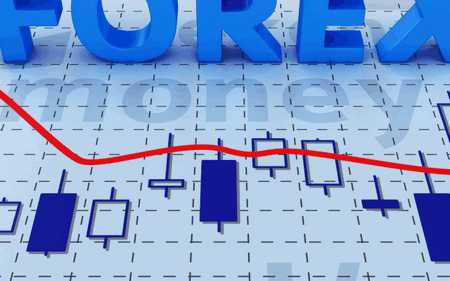What the market supply. The main selection criteria.

Markets exist to facilitate the exchange of goods, services and resources, they bring together buyers and sellers who express their intention to buy or sell by declaring the offered and requested prices for different volumes of supplies. Even if the transaction does not occur, the information is still used to determine the price of this product. An example of a market is the New York Stock Exchange; its purpose is to promote the purchase and sale of securities. Transactions are not made by buyers and sellers themselves but by brokers and dealers representing their interests. Daily transaction prices are published in a large number of national newspapers because markets also perform an important function of determining the prices of goods or as in this case securities.
Buyers are just one side of the market; those who aim to meet their demand are on the other side – these are numerous manufacturers and sellers whose actions form the market supply. Supply is a particular amount of goods that sellers want to sell on a particular market in a given period of time under specific conditions. The supply concerns exclusively the goods produced for sale. The main source of supply is production but the key factor is the price that creates the conditions for the relationship among sellers and buyers. For example, there may be a price at which the produced goods are not offered but are stored in the warehouse until a new more favorable price is formed. When the price is so low that demand exceeds supply, buyers will make the price go up removing weak competitors from the market and attracting more sellers. When the price is so high that the supply exceeds demand, sellers reduce the price attracting more buyers to it. As a result, the market can generate an equilibrium price, which no one has a reason to raise or lower. In this case, a product will be bought by the X strongest buyers from the X strongest sellers.
The law of supply specifies that the increase in prices for goods stimulates supply, lower prices lead to its reduction. This stable relationship reflects the impact of the quantity supplied. But, similar the law of demand, the law of supply has exceptions. For instance, we can take monopsony (when there is only one buyer on the market among multiple sellers); there is an increase in the competition of sellers and a decrease in prices. In such cases, sellers try to keep the volume of sales by increasing the number of "purchase and sale" transactions when prices are lowered.
The effect of the law of supply can be illustrated by the supply schedule (curve). It is a graphic expression of the connection between the price and the quantity of this product that the manufacturers want to offer to the market. The supply curve has an ascending tendency, which is due to the action of the supply law. Bear in mind that the reaction of supply to the market price movements is much slower in comparison with the demand reaction.

The supply curve is based on the premise that every factor stays the same with the exeption of the market price . It has already been mentioned above that, in addition to the price of supply, many other factors (called non-price) affect it. The quantity supplied can change at every price if it is influenced by the change in one of them. This is depicted by moving the supply curve to the right or to the left. Non-price factors that affect market supply to some extent include:
Level of technology development.
This one leads to an increase in the level of resource productivity – this way you can produce more goods per unit of resources. For example, the introduction of a production line leads to a higher production value. Therefore, as the technology becomes more advanced, the supply goes up. This factor, however, has little effect on those goods that require manual labor and using traditional technologies.
Resource prices.
Rising prices for resources can cause an increase in the cost of production and as a result, contribute to an increase in the price at which producers are ready to sell their goods.
Tax rates.
Taxes affect the amount of producer s' profit; in order to compensate for the increase in taxes, producers increase the price of end products. This factor is most significant for those goods that are subject to high taxation. For example, the state usually imposes high taxes on the production of alcoholic beverages and tobacco products in order to limit the consumption of these goods or products made from wild animal fur to prevent their extinction.
The number of producers.
Evidently, the more producers there are, the higher quantity supplied there will be. However, in this case, limited resources should also be taken into account. When the number of producers increases, cheap resources get exhausted. Newly emerging companies on the market will be forced to use more expensive resources; for example, if local raw materials become depleted, these resources will have to be imported, which will cost more. Such goods stop being profitable to sell at the previous price, which means that the supply at this price will not increase.
Prices for other goods.
Manufacturers are in constant search for the most profitable investment of capital. If the price of a commodity goes up, it becomes more attractive for investment and capital flows. This factor is most significant for goods with similar production conditions since in this case switching to another type of product does not require large expenses.
Elasticity of supply is an indicator that reflects the degree of supply sensitivity to the change in the price of the proposed goods. The price elasticity can be estimated quantitatively using the coefficient calculated in the same way as the coefficient of price elasticity of the demand; only instead of the demand values you use the supply ones:
ES = (Q2-Q1)*(P2+P1) / (Q2+Q1)*(P2-P1), where Q1 and Q2 are the initial and the current quantity supplied; P1 and P2 are the initial and the current prices.
Consider the three following cases. The first case is the situation when the quantity supplied remains practically unchanged regardless of the price change. In this case, there is an inelastic supply. An example of a market characterized by an inelastic supply is the market for fresh fish. After all, it is necessary to sell it in any case at any price, otherwise this product will simply deteriorate and it will be impossible to sell it at all. The second case is the opposite. Here, a slight change in the price of the goods causes a significant shift in the quantity supplied, meaning it is an elastic proposal. The third case, which is somewhere in between is the change in the price that is completely compensated by the change in the quantity supplied. Here we have a supply with a unitary elasticity.

The elasticity of supply depends on many factors:
- the possibility of long-term storage and storage costs. A product that cannot be stored for a long time or its storage is expensive, has a low elasticity;
- particular features of the production process. In case the producer of a good can either increase their output with higher prices or issue another product with a price reduction, the supply of this product will be elastic. It is important to note that high production costs provide an opportunity to enter the market using innovations that help reduce costs in the production of the same goods;
- time factor. The producer cannot respond quickly to price changes since it takes a certain amount of time to hire additional employees or reduce their number, purchase production assets (when necessary), make bank loan payments. The supply can be increased by the growth of demand only by more intensive use of existing production capacities in the short period. However, such intensity can increase the market supply only by a relatively small amount. Consequently, the supply is considered low-elastic. Entrepreneurs can increase their production capacity by expanding existing opportunities and building new businesses in the long run. Thus, the elasticity of supply can become quite substantial;
- prices of resources. In this case we are talking about the cross-elasticity of the sentence;
These days virtually every developed country in the world has a market economy in which state intervention is minimal or nonexistent. Prices for goods, their assortment, volumes of production and sales - everything develops spontaneously as a result of how market mechanisms work, the most important of which is the law of supply and demand. Therefore, it is important to at least understand the basic concepts of economic theory in this area: supply and demand, their elasticity, the demand curve and the supply curve, as well as the factors that determine them.
You can also familiarize yourself with fraudulent brokers.





Post a Comment